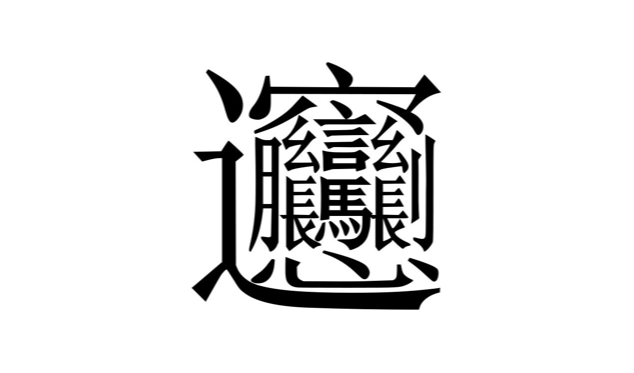5 most difficult Kanji (漢字) in the world
The history of kanji
It is said that there are 200 thousand kanjis in the history of China, 50 thousand in Japan and Japanese people usually use around from 2,000 to 4,000 kanjis daily.
Kanji was born in China designed after illustrations. In early days, old kanjis were just too difficult to write.
Kanji was born in China designed after illustrations. In early days, old kanjis were just too difficult to write.
And they are basically illustrations, therefore everybody write the same kanji in different ways.
Therefore, old Chinese people tried to simplify kanji so that everyone can write any kanji in the same way.
That is the ancestor of current kanji.
As time comes closer today, kanjis got more and more simple.
But until 1956-1964, Chinese people used traditional kanji. But on 1964, Chinese people completely started to use simplified kanji.
Japanese people also simplified kanji at the era too. But Japanese kanji is more complicated than Chinese simplified kanji.
Currently, only Taiwan and HongKong use traditional kanji.
Therefore, old Chinese people tried to simplify kanji so that everyone can write any kanji in the same way.
That is the ancestor of current kanji.
As time comes closer today, kanjis got more and more simple.
But until 1956-1964, Chinese people used traditional kanji. But on 1964, Chinese people completely started to use simplified kanji.
Japanese people also simplified kanji at the era too. But Japanese kanji is more complicated than Chinese simplified kanji.
Currently, only Taiwan and HongKong use traditional kanji.
Let's take a look at top 5 difficult kanjis
There are some very difficult kanjis left behind the history.
Most of them are not used now. The reason is quite simple. It take so long to write and difficult to understand too.
Current most difficult kanji should be 鬱 or 鑑.
Now let's take a look at the great legacy of Chinese history.
Most of them are not used now. The reason is quite simple. It take so long to write and difficult to understand too.
Current most difficult kanji should be 鬱 or 鑑.
Now let's take a look at the great legacy of Chinese history.
"Taito"
"Sei"
"Biang"
Hot oil noodle- Biang Biang mian (Biang Biang noodles) is a very interesting and popular dish in Shaanxi province. And definitely it was one of my favorite dishes during my four years of university life.
Yin
Share
More Matome
Tuesday, December 02, 2025 at 15:54
38 view
Tuesday, December 02, 2025 at 15:58
38 view




.svg.png)

















